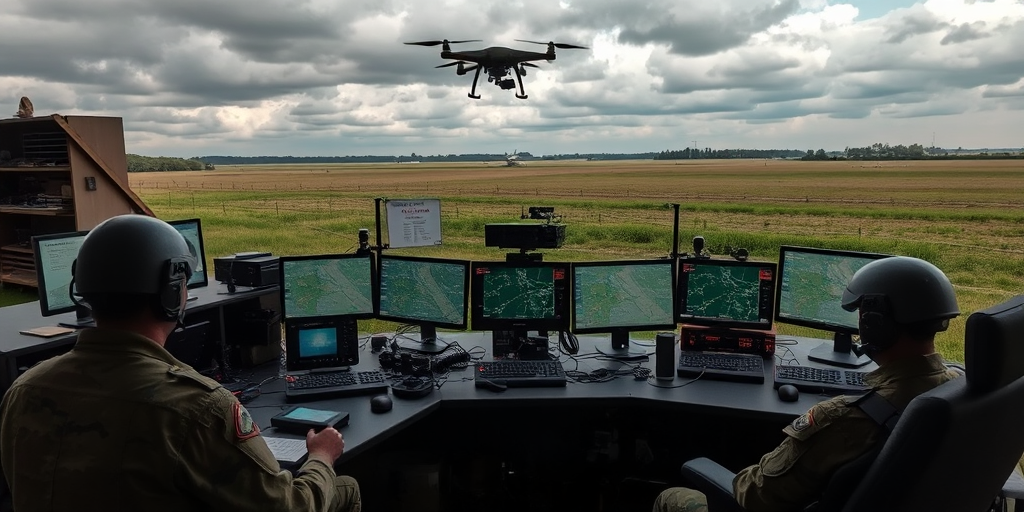Have you ever considered how next-gen combat communications are revolutionizing battlefield connectivity? Advanced systems now deliver instant, encrypted data exchanges that eclipse old-world methods, much like switching from fragile carrier pigeons to robust, AI-powered networks. Modern software-defined radios, integrated with rapid frequency hopping and layered encryption, redefine operational security under cyber threats. This evolution, merging historical strategies with cutting-edge technology, empowers military professionals to maintain uninterrupted command links on the modern front. Dive into the transformative world of secure, real-time communications that are reshaping military operations today.
Innovative Next-Gen Combat Communications: Encryption Protocols and Real-Time Data Advantages

Modern combat communications have advanced beyond traditional encryption by incorporating layered approaches that mitigate key compromise and cyber exploitation. These systems use software-defined radios that support high-speed frequency hopping with AI/ML integration to dynamically adjust frequencies, thereby dodging jamming attempts and ensuring instant secure data exchange. Technical metrics demonstrate exceptional encryption strength and bandwidth resilience, enabling real-time transmission efficiency even in congested electromagnetic environments.
A critical case study from 2023 highlights secure satellite devices that maintained uninterrupted command during relentless cyberattacks. These devices transmitted critical updates by dynamically adjusting encryption parameters to counter evolving threats. The advanced battlefield cypher utilized in these operations ensured that all tactical messaging remained encrypted, safeguarding vital command data against interception.
Question: What ensures that tactical messaging remains uncompromised during cyberattacks?
Answer: Layered encryption protocols paired with dynamic frequency hopping enabled by software-defined radios ensure that tactical messaging remains protective during cyberattacks.
- Layered encryption mitigates risks posed by key compromise
- Software-defined radios enable rapid frequency adaptation
- AI/ML integration optimizes jamming avoidance protocols
- Technical metrics confirm robust encryption strength and bandwidth resilience
Next-gen protocol integration brings together encryption standards and real-time data benefits to support mission-critical operations. Instant secure data exchange is achieved through robust algorithms that accommodate both high-speed data flows and diverse operating conditions. This integration supports advanced battlefield cypher techniques, allowing secure tactical messaging indispensable for modern combat. With increasing reliance on adaptive encryption protocols and real-time monitoring, military networks are better equipped to counter evolving threats while ensuring that essential communication channels remain secure and resilient under adverse conditions.
Future Trends and Strategic Impact of Next-Gen Combat Communications: Essential Channel Innovations

What innovation is anticipated to reduce vulnerabilities in next-gen combat communications?
Answer: Dynamic API integrations combined with improved interoperability reduce vulnerabilities.
Emerging trends in combat communications are setting the stage for quantum-resistant encryption algorithms and the integration of AI/ML to manage complex electromagnetic spectrum challenges. In the next 10–20 years, we expect cloud and edge computing integrations to support resilient, real-time communications that are crucial for digital frontline networks. Future combat encryption trends emphasize next-gen crypto standards that not only secure tactical messaging but also integrate seamlessly with multi-domain military operations.
Digital frontline networks are evolving from traditional methods to sophisticated digital network defenses. This evolution leverages quantum computing capabilities for rapid, dynamic encryption adjustments, enabling units to maintain secure command channels under adverse conditions. The integration of cutting-edge technologies ensures that vulnerabilities are minimized, particularly through improved interoperability and dynamic API integrations across various military branches.
Advances in emerging tactical connectivity are refining operational paradigms. AI-driven systems rapidly adjust signal protocols to mitigate jamming attempts, ensuring that data remains uncompromised. Emphasis on future combat encryption trends highlights the strategic impact of these technologies, enabling robust cyber defenses while maintaining mission-critical connectivity. These innovations inspire a forward-looking vision that aligns with the demands of modern warfare, cementing secure digital networks as the backbone of future military communication frameworks.
- Quantum-resistant encryption algorithms
- AI/ML integration for spectrum management
- Cloud and edge computing for resiliency
- Dynamic API integrations enhancing interoperability
Final Words
In the action, we examined how evolving encryption protocols and rapid data transmission redefine secure battlefield communications.
Our analysis detailed historical shifts, innovative protocols, and deployment strategies that ensure robust field links.
We explored emerging trends like quantum-resistant encryption and AI-integrated signal management.
These advancements empower Next-Gen Combat Communications: Instant, Encrypted, Essential for dynamic military operations.
Embracing modern technologies unlocks a new era of secure, agile command connectivity.
Positivity and precision drive these innovations, paving the way for a resilient future on the digital battlefield.
FAQ
Q: What encryption standards does the US military currently employ?
A: The US military utilizes Suite B cryptographic algorithms, including Advanced Encryption Standard (AES) and elliptic curve cryptography, ensuring maximum security for classified communications and data protection.
Q: Why are next-generation encryption methods crucial for military operations?
A: Next-generation encryption safeguards against quantum computing threats, prevents signal interception, and maintains battlefield advantage through advanced protocols that protect critical military communications.
Q: How do modern combat communication systems maintain security?
A: Modern combat systems employ multi-layer encryption, frequency hopping, and software-defined radio technology. These features enable secure real-time data exchange while avoiding enemy detection.
Q: What innovations are shaping future military communications?
A: Quantum-resistant algorithms, artificial intelligence integration, and edge computing developments are revolutionizing military communications, enhancing both security and operational efficiency.
Q: How does instant encrypted messaging benefit battlefield operations?
A: Instant encrypted messaging enables rapid command decisions, secure coordination between units, and real-time intelligence sharing while maintaining operational security in contested environments.
Q: What role does cloud infrastructure play in military communications?
A: Cloud infrastructure supports rapid deployment, enhances scalability, and enables secure cross-domain communications for managing critical data streams and UAV operations.
